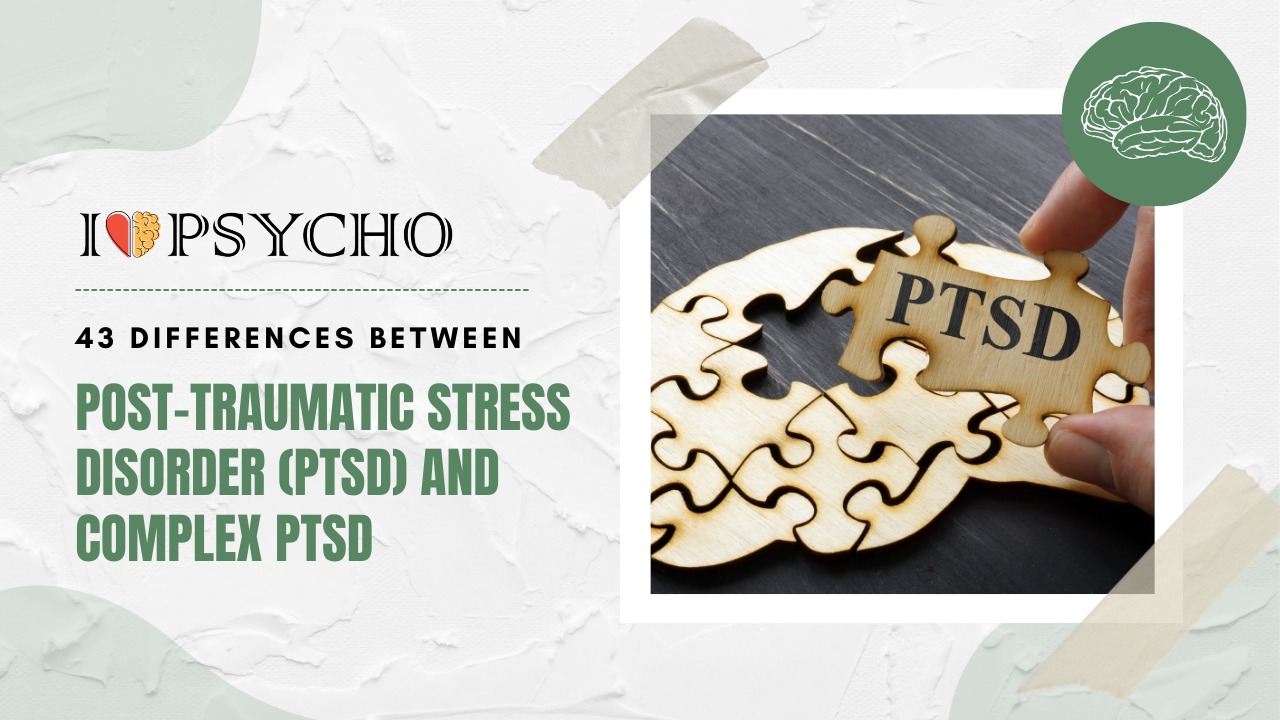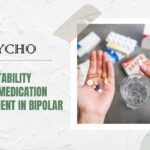Post-Traumatic Stress Disorder (PTSD) and Complex PTSD have similar origins but different symptoms. A single traumatic incident, such as a car accident or military battle, that causes acute anxiety, helplessness, or terror usually causes PTSD. In contrast, Complex PTSD (C-PTSD) is caused by recurrent exposure to trauma, such as abuse, early neglect, or interpersonal trauma.
PTSD symptoms include intrusive thoughts and recollections, avoidance, negative mood and cognitive changes, and increased reactivity. PTSD sufferers may have nightmares or flashbacks and avoid cues that remind them of the experience. They may also experience emotional numbness, guilt, or skewed self- or worldviews. Hyperarousal—irritability, trouble focusing, and heightened startle response—is also prevalent.
Complex PTSD goes beyond these symptoms. C-PTSD patients have numerous PTSD symptoms but additionally struggle with emotional control, relationships, and self-perception. They may feel shame, remorse, or self-blame more often. Complex PTSD sufferers also have greater interpersonal issues and identity crises.
Trauma length and kind are also important. PTSD is caused by isolated trauma, but Complex PTSD is caused by persistent trauma, frequently with power imbalance. This difference influences treatment strategy. While Cognitive Behavioural treatment (CBT) and exposure treatment are useful for both illnesses, Complex PTSD patients may benefit more from therapies that target relationship issues and enhance emotional control and self-esteem.
The nature of the experience and its symptoms distinguish PTSD from Complex PTSD. PTSD is characterized by intrusive thoughts, avoidance, mood changes, and hyperarousal after a single experience. Complex PTSD, caused by recurrent, chronic trauma, comprises these symptoms and difficulties with emotional control, self-perception, and relationships. Recognizing these differences is crucial for correct diagnosis and successful therapy suited to either illness.
Also Read: 42 Difference Between Anxiety and Depression
Here are the 43 differences between Post-Traumatic Stress Disorder (PTSD) and Complex Post-Traumatic Stress Disorder (C-PTSD):
|
S.No. |
Aspect |
Post-Traumatic Stress Disorder (PTSD) |
Complex Post-Traumatic Stress Disorder (C-PTSD) |
|
1 |
Type of Trauma |
Typically results from a single traumatic event |
Develops from chronic, repeated traumatic experiences |
|
2 |
Trauma Severity |
May occur after severe or life-threatening events |
Often involves prolonged, interpersonal trauma |
|
3 |
Diagnostic Criteria |
Diagnosed according to DSM-5 criteria |
Proposed diagnosis, not yet in all diagnostic manuals |
|
4 |
Triggers |
Specific traumatic reminders can trigger symptoms |
Symptoms may be triggered by a range of situations |
|
5 |
Core Symptoms |
Re-experiencing, avoidance, hyperarousal, negative alterations in mood and cognition |
Core symptoms plus difficulties in emotional regulation and interpersonal relationships |
|
6 |
Flashbacks |
Common symptom, reliving the traumatic event |
May include emotional flashbacks without vivid memories |
|
7 |
Emotional Numbing |
Emotional numbing and detachment may be present |
Emotional dysregulation and intense emotional responses |
|
8 |
Dissociation |
May experience dissociation as a coping mechanism |
Higher likelihood of chronic dissociation symptoms |
|
9 |
Trust and Relationships |
Impaired trust and difficulty in relationships |
Chronic difficulties in forming and maintaining relationships |
|
10 |
Sense of Self |
May have identity disturbance |
Chronic struggles with self-concept and self-esteem |
|
11 |
Age of Onset |
Can develop at any age |
Often develops during childhood or adolescence |
|
12 |
Duration of Symptoms |
Symptoms can be chronic or resolve over time |
Persistent and long-lasting symptoms |
|
13 |
Peritraumatic Responses |
Strong peritraumatic responses are common |
Peritraumatic responses may be more pronounced |
|
14 |
Symptom Onset |
Symptoms typically begin shortly after the traumatic event |
May have a delayed onset, sometimes years later |
|
15 |
Fear vs. Shame |
May involve fear and anxiety responses |
Often involves shame, guilt, and self-blame |
|
16 |
Diagnostic Labels |
Diagnosed as PTSD |
May not always receive a specific diagnosis |
|
17 |
Emotional Regulation |
Typically, emotional regulation difficulties are related to fear and arousal |
Emotional dysregulation involves a broader range of emotions |
|
18 |
Dissociation Symptoms |
May experience dissociation during flashbacks |
May have chronic, non-episodic dissociation symptoms |
|
19 |
External Triggers |
External triggers often relate to the traumatic event |
Triggers can be more diverse and unrelated to the trauma |
|
20 |
Therapy Approaches |
Prolonged Exposure, Cognitive Processing Therapy, EMDR, etc. |
Therapy often involves addressing emotional regulation and relational difficulties |
|
21 |
Self-Concept and Identity |
Identity often remains relatively intact |
Identity may be more fragmented and unstable |
|
22 |
Trauma Types |
Typically associated with single-event traumas |
Associated with prolonged interpersonal traumas |
|
23 |
Nightmares |
Nightmares about the traumatic event are common |
May have nightmares related to relational trauma |
|
24 |
Social Functioning |
Social functioning may be impaired but is often preserved |
Chronic difficulties in social relationships |
|
25 |
Emotional Avoidance |
May avoid emotions related to the trauma |
May have difficulty regulating emotions in various situations |
|
26 |
Self-Esteem |
Self-esteem may be impacted, but not to the same extent as C-PTSD |
Chronic issues with self-worth and self-esteem |
|
27 |
Treatment Challenges |
Challenges in therapy often relate to trauma reminders and fear |
Treatment challenges can involve emotional regulation and interpersonal issues |
|
28 |
Behavioral Avoidance |
Avoidance behaviors often relate to trauma reminders |
Behavioral avoidance can extend to interpersonal situations |
|
29 |
Flashbacks of Traumatic Events |
Flashbacks typically related to a specific traumatic event |
Emotional flashbacks may not involve explicit memories |
|
30 |
Hyperarousal Symptoms |
Typically experience hyperarousal in response to trauma reminders |
Chronic hyperarousal and emotional reactivity |
|
31 |
Coping Mechanisms |
May use various coping mechanisms, including avoidance |
May use dissociation, self-harm, and other complex coping strategies |
|
32 |
Therapeutic Approaches |
Trauma-focused therapies are common |
May benefit from therapies that address complex trauma and emotional regulation |
|
33 |
Recollection of Trauma |
Memories of the traumatic event are typically explicit |
Memories of the trauma may be fragmented or incomplete |
|
34 |
Response to Stress |
May have an exaggerated startle response to stress |
Response to stress can involve emotional dysregulation and intense reactions |
|
35 |
Childhood Trauma |
May have experienced childhood trauma, but not always |
Childhood trauma is a common antecedent in C-PTSD |
|
36 |
Emotional Flashbacks |
Emotional flashbacks are less common |
Emotional flashbacks are a central feature |
|
37 |
Functional Impairment |
Functional impairment often relates to trauma reminders and avoidance behaviors |
Functional impairment often relates to emotional dysregulation and relational difficulties |
|
38 |
Self-Soothing Strategies |
Strategies may involve grounding and relaxation techniques |
May have difficulty self-soothing during emotional dysregulation |
|
39 |
Attachment and Trust Issues |
Attachment issues may exist but are not central |
Chronic issues with attachment and trust are common |
|
40 |
Perceived Threat Level |
Perceived threat level often related to specific trauma reminders |
Perceived threat level can be chronically elevated |
|
41 |
Dissociation Duration |
May experience dissociation during specific traumatic memories |
Chronic dissociation can persist over time |
|
42 |
Treatment Approach |
Often focuses on processing and desensitizing to the traumatic event |
Often involves a more comprehensive approach addressing complex trauma and emotional regulation |
|
43 |
Diagnosis in Diagnostic Manuals |
Recognized and diagnosed as PTSD |
Proposed diagnosis with ongoing research into inclusion |
Also Read: What Clinical Psychologists Do Professionally
Frequently Asked Questions (FAQS)
Q.1 What is the difference between PTSD and Complex PTSD?
PTSD and Complex PTSD are related but separate psychiatric illnesses. Complex PTSD is caused by recurring trauma such as childhood abuse or captivity, while PTSD is caused by one incident. Complex PTSD has more severe symptoms including emotional dysregulation, self-identity issues, and relational issues. These extra symptoms set it apart from PTSD.
Q.2 Does Complex PTSD have a diagnosis?
Complex PTSD is not a DSM-5 diagnosis, but mental health specialists recognize its distinctive traits. The word usually refers to persistent and severe trauma symptoms. Clinicians may diagnose PTSD with complicated traumatic symptoms.
Q.3 What are Complex PTSD treatments?
Complex PTSD treatment is generally thorough. DBT, schema therapy, and long-term psychotherapy address the complex symptoms and problems of the disease. Therapy focuses on emotional control, self-identity, and interpersonal skills. Specific symptoms like anxiety or sadness can be treated with medication.
Q.4 Does complex PTSD emerge in adults?
In addition to childhood trauma, complex PTSD can develop in adulthood through continuous exposure to stressful conditions such as domestic abuse or human trafficking. The persistent and recurring aspect of trauma, regardless of when it happens, is crucial.
Q.5 What is Complex PTSD's prognosis?
Complex PTSD is more guarded than regular PTSD. More symptoms and deep-seated emotional traumas necessitate a more extensive therapeutic approach. With proper treatment and support, many Complex PTSD patients may improve their quality of life and well-being.









